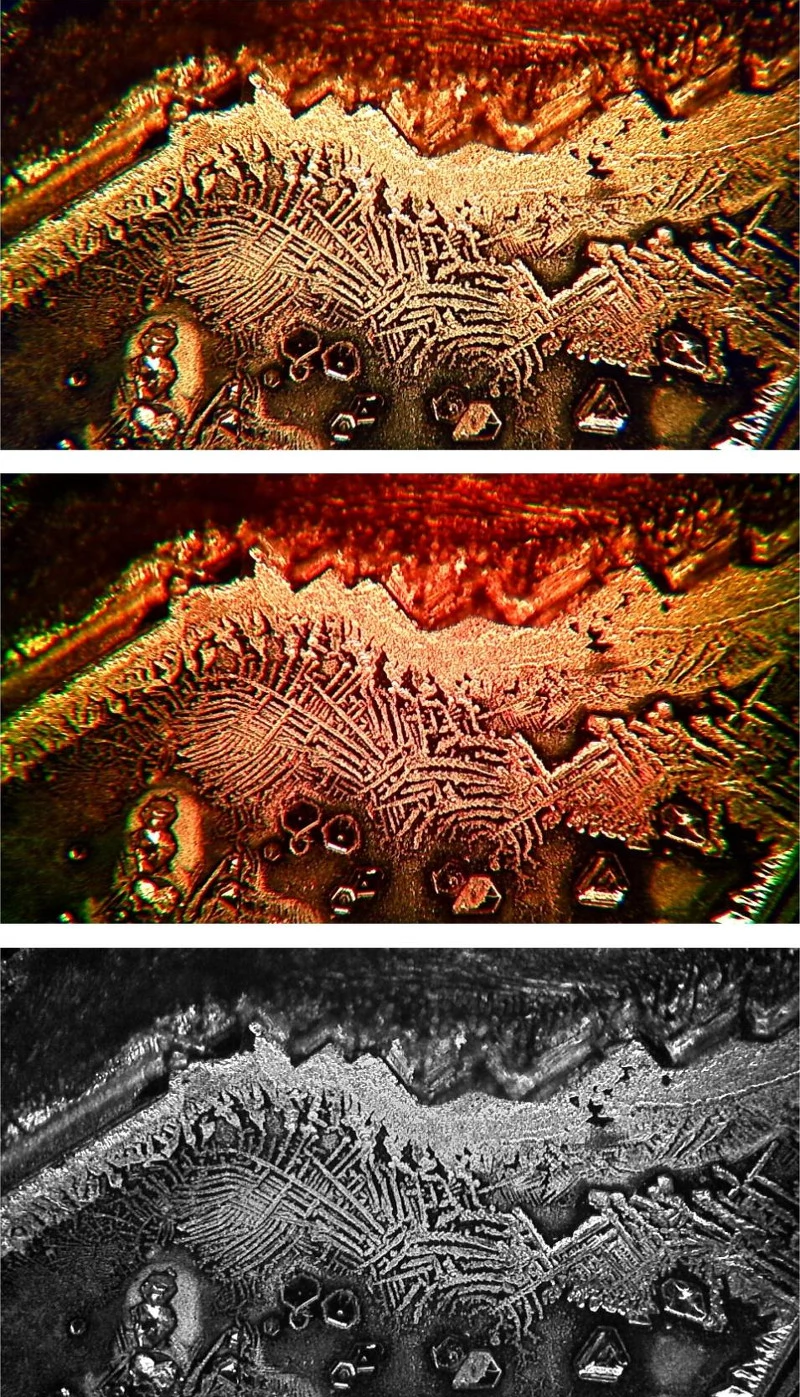Microscope Camera: Illumination Types & Filters
Published on August 21, 2016 by TIS Marketing.
Originally published in Mikroskopie in January 2016, this article was written by J. Piper and M. Torzewski. The English translation, written by Amy Groth, was serialized into: 1, 2, 3, 4, 5, 6, 7, 8, 9, 10 and 11.
Illumination Types and Filters
In addition to bright-field images, images produced via polarized light, darkfield and phase contrast techniques can be flawlessly visualized, photographed and filmed. Even very narrowly filtered monochromatic light (red, green and blue) did not pose any problems for the camera-neither with regard to the exposure nor the precision of the autofocus. Monochromatically filtered objects produced flawless black-and-white images. Figs. 13, 14, 15 and 16 show some application examples which were taken using various types of lighting, filters and microscopes.




